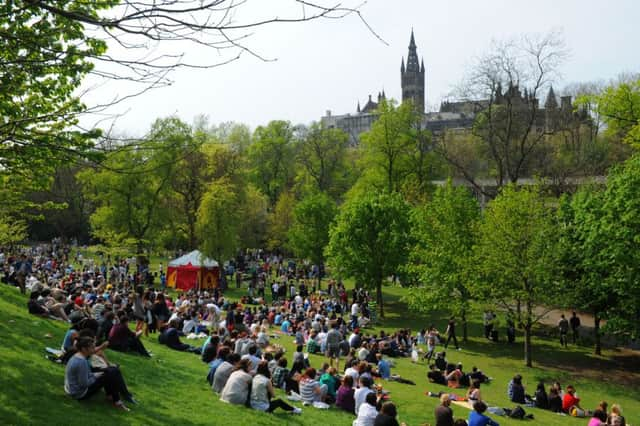Glasgow top of the tree for most greenspace in Scottish cities


Now Ordnance Survey (OS) has updated its groundbreaking Scottish Greenspace Map and extended it to England and Wales.
The free digital map plots all accessible recreational and leisure greenspace in Great Britain – including parks, public gardens, playing fields, playgrounds, allotments and community areas.
Advertisement
Hide AdAdvertisement
Hide AdThe results show Scotland has 1,112 sq km (429 sq mile) of urban green space - the area of 160,000 football pitches.


Glasgow, once known as the second city of the Empire due to its heavy industries, is among the greenest cities in the UK with 13.5 per cent of its total area being accessible green space - including 340 play areas and 55 bowling greens.
Only Birmingham, with 15.6 per cent, and Nottingham with 15.3 per cent, can boast more than Scotland’s largest city.
Edinburgh, with 9.3 per cent, and Aberdeen, with 8.1 per cent, also boast relatively high levels of greenspace.
Glasgow’s high ranking is apt given that its name is the modern form of the ancient Cumbric Glas Cau, which translates as “green hollow”.


Since it hosted the third of the UK’s five garden festivals in 1988, the city has invested considerable amounts to move away from its industrial past and recapture the spirit of the 18th century town visited by the famous English writer Daniel Defoe, who declared it “the cleanest and beautifullest, and best built city in Britain, London excepted.”
Even as its urban environs rapidly expanded in the early Victorian era, the number of public parks continued to grow to the more than 80 which can now be dotted around the city, from the splendour of Kelvingrove to the elegant Hamilton Crescent cricket ground in Partick - all of which are found on the updated OS map.
“It is great to see Scotland leading the way on this,” said Kevin Stewart, minister for local government and housing. “These free, up-to-date, comprehensive maps of accessible greenspace allow everyone to see where to go to enjoy our wonderful outdoors.
Advertisement
Hide AdAdvertisement
Hide Ad“Evidence shows that improving access to local greenspace benefits physical health, mental wellbeing and provides social opportunities. The Greenspace Map helps identify where there is a lack of open space so local authorities, public sector partners and community groups can develop plans to develop and improve these areas within local neighbourhoods.
“These maps provide the cornerstone for open space strategies and green network plans, as well as supporting ground-breaking academic research on greenspace and health.”
The greenspace map is available through the OS Maps app and as an open dataset for communities and businesses to create products and services that will encourage healthier and greener lifestyles.
Ordnance Survey chief executive Nigel Clifford, said: “Geospatial data can transform Governments, businesses and communities for the better. We see that through our work in Great Britain and internationally, and we’re excited to be one of those at the forefront leading this and making contributions of consequence and benefit.
“I’m particularly proud of this product as it delivers valuable information to the public, enabling people and families living in urban areas across Great Britain to discover the greenspaces near them.
“In addition to this, we’re also making the data open and freely available to anyone who can access it and begin experimenting and creating with. I look forward to seeing what people come up with.”